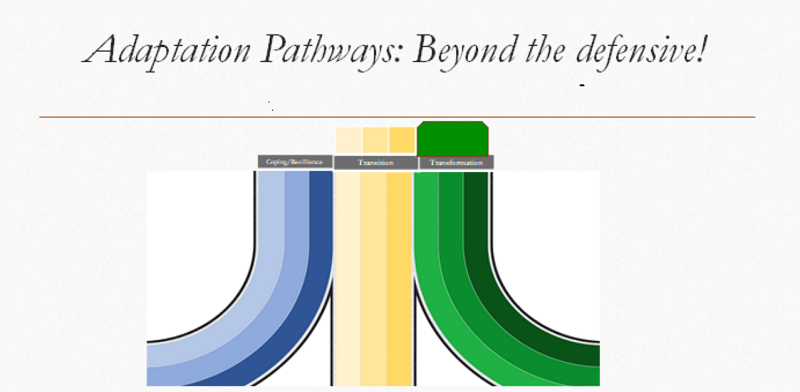Communicating climate change and adaptation options is at the root of effective action
Communicating climate change and adaptation options is at the root of effective action
Dr Tyrone Hall shares his insight into the critical importance of 'framing' climate change adaptation communications so that they catalyse effective actions. Dr Hall is a sustainability communications specialist with experience across the Caribbean, Asia-Pacific and internationally.
We’ve wrestled with the climate crisis for nearly four decades yet we still ‘talk climate’ in stock terms.
We should ‘talk climate’ differently. Messaging and how we engage are among the most potent measures of the strength of a vision and quality of actions. This is no different in the climate space. But the engagement and messaging frames we need to connect outside our bubble and drive action are distinct from general communications or public relations.
None of this means the way we ‘talk climate’ is necessarily dull, stodgy, or lack resonance. It means our starting point is vastly different – the colour, flair and stylistic elements are secondary, yet necessary subtexts.
Our burden is to communicate differently. We need to expand our standard crisis communication toolbox to effectively address the world’s most intractable challenge, which is profoundly interlinked, permanent, and intensifying.
Since our task is to communicate an evolving ‘whole-society’ risk that we must live with, manage, and thrive around, it is time we clarify and robustly pursue adaptation communication. Adaptation is distinct from, and as important as, mitigation. Adaptation is the response mechanism through which “win-win” outcomes are most likely and the modality through which the most vulnerable must act and frame their responses. It is the tangible aspect of the climate response: new crop varieties that sustain communities, seawalls that buttress whole villages and vital infrastructure such as schools, hospitals, cultural and other religious sites, among other things.
Communicating adaptation should be driven by the principle of action to awareness i.e., demonstrated actions with opportunities for learning and local ownership. Adaptation is a process that will evolve perpetually. It requires messaging and strategic engagement for the long-haul, and discipline, patience and planning in designing policy and programmes.
This planned rather than ad-hoc approach to communicating the evolving and inevitable will ensure we can confidently cultivate an ideal future. If our goal is to merely cope, enable transition (read resilience), or foster transformation, our messages and how we engage stakeholders will be profoundly distinct. Whatever the ambition level of the policy choices we make, our communication choices are powerful markers of our intent and credible predictors of likely outcomes.
A framework for communicating climate change and adaptation
I outlined a research-based framework for communicating climate change to support adaptation action in Working Paper 68. The paper positions adaptation as a dynamic process with three broad pathways across a linked continuum (coping, transition and transformation). The pathways are layered, as shown by the colour gradients in figure 1. Communication for adaptation at any point within this pathway can create tipping-points and movement across the continuum. I draw upon an expansive international study to suggest the communication elements, and associated engagement formats that can support each adaptation pathway.
Figure 1: Adaptation Pathways: Coping/Resilience (blue); Transition (yellow); Transformation (green).

The framework is premised on data and findings from my study of seven distinct adaptation initiatives in 17 highly vulnerable communities across Belize, Fiji and India. It highlights critical elements associated with distinct communicative approaches necessary for each of the three climate action pathways outlined.
Findings: How climate and adaptation ‘framings’ correlate with outcomes
The paper describes the level of ambition with which each of the 17 projects was designed and how they were implemented and functioned across the 17 villages, relative to the three adaption pathways (coping, transition and transformation). (See Working Paper 68, table 1).
Five of the seven interventions I examined were designed to with substantial ambition, which means they promised at least moderate transition. Worryingly, none of the projects materialised more favourably than they were designed, and the majority (four of seven) fared worse. The chief challenges and opportunities for action include the dominance of subsistence frames, limited and issue specific responses, economistic frames, insufficient demonstrative learning, and approaching the provision of information on a need-to-know-basis, narrow engagement of groups or spheres of community life with profound age and gender implications, and the time-bound siloed nature of responses. At the very least, these observations suggest an urgent need to pivot and embrace a more long-term strategic but itinerant and responsive logic. “Talking climate differently” is beyond buzz!
Tyrone Hall, PhD is a sustainability communicator. Learn more about his work via tyronehall.com
